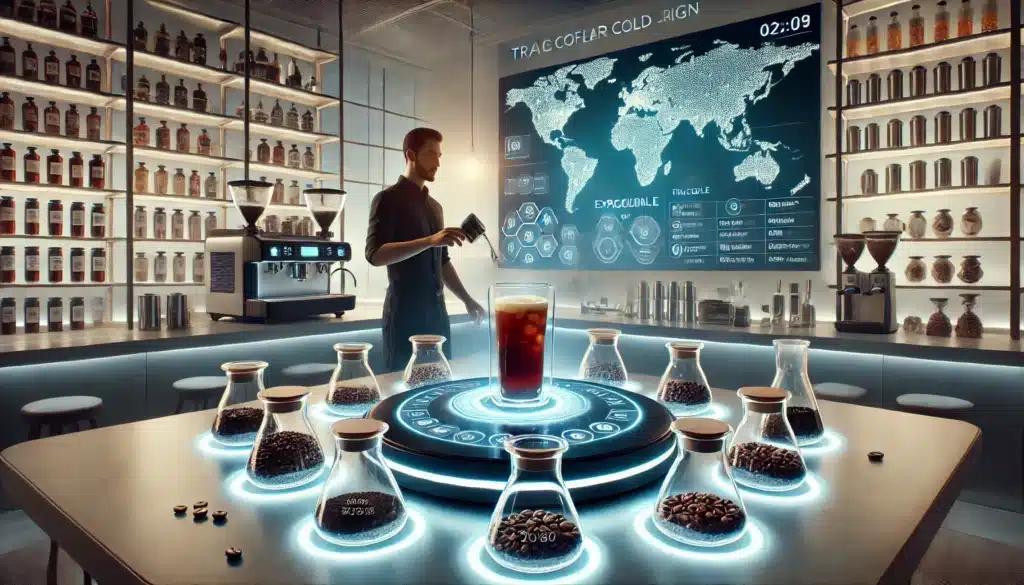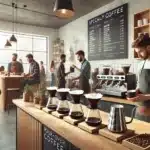Coffee has always evolved — from its mystical origins in Ethiopian forests to the global specialty movement. Today, the future of coffee is shaped not only by tradition, but by technology, sustainability, and creativity. New brewing methods, digital platforms, and science-driven cultivation are redefining how we grow, prepare, and experience coffee.
In this article, we explore ten innovations that are transforming the future of coffee — both for drinkers and producers around the world.
1. Smart Brewing Technology
The rise of smart coffee machines is changing how we brew at home and in cafés.
Connected devices like the Spinn, Ratio Six, or xBloom allow users to:
- Control brewing variables via smartphone
- Customize recipes for different beans
- Receive remote updates from roasters
These tools bring barista-level precision to home brewers, making specialty coffee more accessible.
2. Ready-to-Drink (RTD) Evolution
RTD coffee is booming — and it’s getting more sophisticated. Forget sugary canned drinks; the new wave includes:
- Nitro cold brew in sleek cans
- Flash-brewed single-origin bottles
- Shelf-stable lattes with oat milk and adaptogens
This innovation meets the demand for convenience without compromising quality, especially among younger consumers.
3. Coffee and Functional Wellness
Coffee is merging with the world of functional beverages, offering both flavor and benefits.
Some trending additions include:
- Mushrooms (like lion’s mane and chaga) for brain health
- CBD for relaxation
- Collagen and protein for energy and fitness
These blends reflect a growing desire for coffee that supports well-being and performance.
4. Sustainable Packaging Solutions
With climate concerns growing, the coffee industry is rethinking packaging.
Innovations include:
- Compostable coffee bags made from plant-based films
- Reusable capsules for espresso machines
- Returnable glass bottles in RTD programs
Brands are also minimizing ink usage, glue, and CO₂ emissions, pushing for a greener cup.
5. Digital Coffee Traceability
Blockchain and QR-code technology are helping consumers trace their coffee from farm to cup.
By scanning a code, you can now access:
- Farm location and altitude
- Producer profiles
- Processing methods and roast dates
This transparency builds trust, supports ethical sourcing, and helps small producers share their story with the world.
6. Experimental Processing Techniques
Producers are embracing experimental fermentations, including:
- Anaerobic fermentation
- Carbonic maceration
- Koji mold-assisted processing
These methods unlock bold, unique flavor profiles, pushing the boundaries of what coffee can taste like — often described as tropical, wine-like, or candy-sweet.
7. Artificial Intelligence and Coffee Farming
AI is beginning to support coffee farmers in predicting yields, identifying diseases, and optimizing irrigation.
Some tools use satellite imagery and machine learning to:
- Detect leaf rust early
- Recommend harvest dates
- Monitor soil and weather patterns
This technology empowers farmers to make data-driven decisions, increasing both quality and resilience.
8. Coffee Without Beans?
Yes — molecular coffee is being developed by startups like Atomo. These beverages replicate the taste and aroma of coffee using upcycled plants and lab techniques, without using coffee beans.
Why? It could reduce dependence on vulnerable coffee crops and provide a sustainable alternative in the face of climate change.
Reception is mixed, but the concept challenges how we define coffee itself.
9. Sensory Science and Coffee Flavor
Advances in sensory science are helping roasters and baristas better understand how we perceive flavor.
Tools like gas chromatography, electronic noses, and tasting algorithms allow professionals to:
- Map flavor development during roasting
- Predict consumer preferences
- Create more consistent, targeted flavor profiles
The result? A future where every cup is more predictable, repeatable, and personalized.
10. Virtual Coffee Experiences and Education
In the post-pandemic world, virtual cuppings, online brewing workshops, and coffee subscriptions with video stories are becoming mainstream.
You can now:
- Learn from world champion baristas on YouTube or apps
- Tour coffee farms via VR
- Join live tastings with roasters around the globe
These platforms break geographical barriers and create a more connected, informed global coffee community.
Final Thoughts: Brewing the Future, One Innovation at a Time
The future of coffee isn’t just about gadgets or gadgets — it’s about rethinking how we connect to the cup.
As we navigate climate change, technology, and shifting lifestyles, coffee remains a symbol of creativity, culture, and care. Whether you’re sipping from a smart machine or exploring molecular brews, one thing is certain:
The coffee journey is far from over — and the next chapter is just beginning.







